"We need creative ideas to change the food system" says Marije Vogelzang
The production and consumption of food needs to be radically rethought if we are to feed the world's population, according to designer Marije Vogelzang.
Vogelzang, who curated the Embassy of Food at Dutch Design Week last month, has described the global food situation today as "sick".
"There are many issues in the world of food, looking at how many people do not have food and how many people have too much food," said Vogelzang, who describes herself as an eating designer.
"I think the division of food is sick. If we keep on consuming the way we do, we won't have the foods that we have now, so we need creative ideas to change this food system."

In a video interview with Dezeen as part of our Good Design for a Bad World project, Vogelzang claims that "designers can help us change perception on food, and understand the true value of food, to build a healthy future".
Vogelzang sought to demonstrate this with the Embassy of Food, which was open to the public throughout Dutch Design Week last month – alongside other "embassies" themed around topics like intimacy and health.
The exhibition explored design-led solutions to problems such as food waste, scarcity of resources and meat production.
In the film, Vogelzang describes it as a "participatory and interactive exhibition about the future of food".
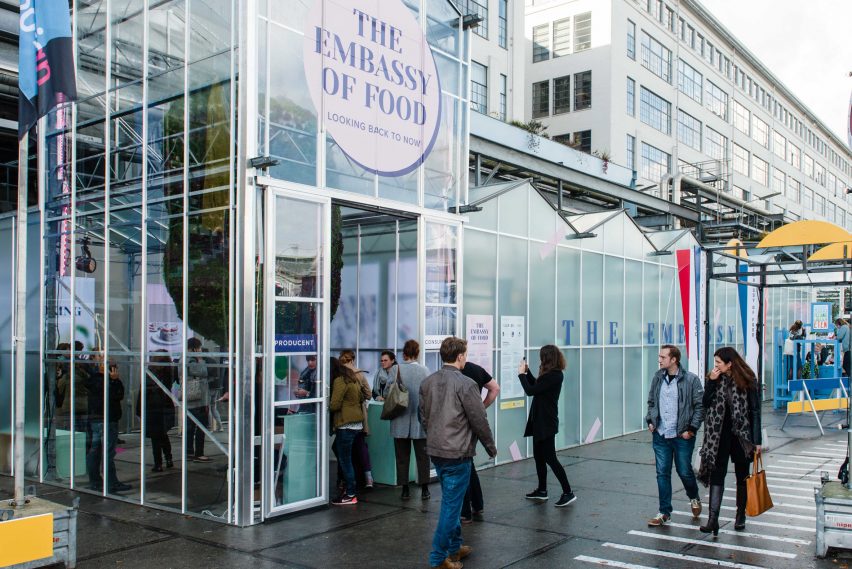
Vogelzang previously established the Man and Food department at Design Academy Eindhoven. The course, which she spoke to Dezeen about in a 2014 interview, eschews teaching cooking skills for a more holistic approach to food education, taking in the full cycle of production, consumption and waste.
In 2015, she curated the Eat Shit exhibition at Milan design week, where students on the Food Non Food course exhibited projects that confronted the taboo around discussing human faeces, and drew links between excrement and food production.
For the Embassy of Food, she chose to showcase a large variety of projects and ideas, with exhibits ranging from saltwater-grown carrots to sausages made from insects.
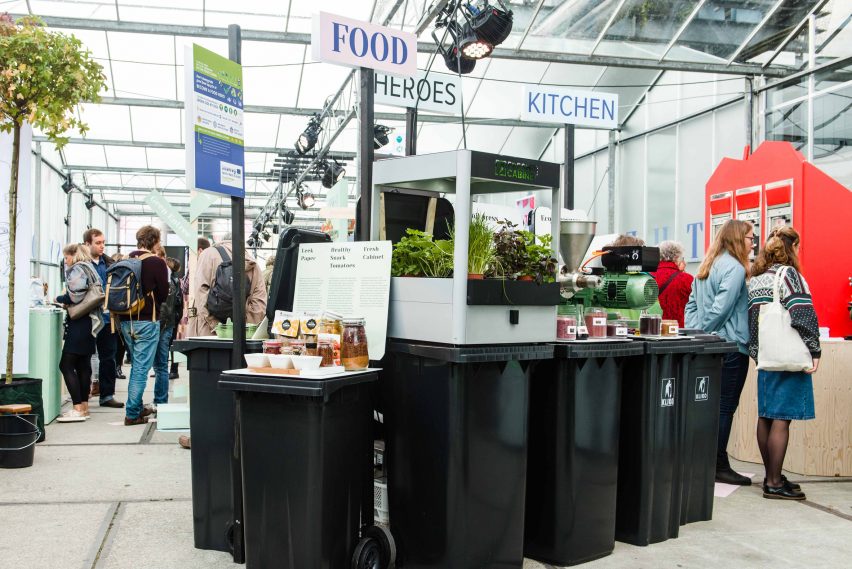
Situated inside a greenhouse, the exhibition revolved around a participatory audio tour.
"You have to choose whether you want to be a producer or a consumer, and you get an audio narrative according to your choice," says Vogelzang.
"This audio narrative isn't an explanation of the projects themselves; it's actually a fantasy story about the possible effects of the scenarios you're encountering, showing cultural effects or social effects of the proposed works."
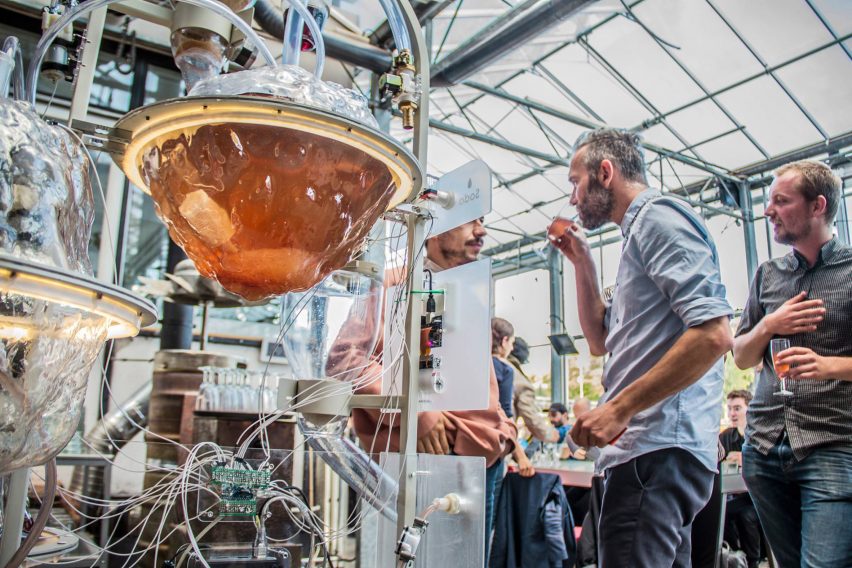
One of Vogelzang's highlights is a project called SAM (Symbiotic Autonomous Machine), an automated food-production system by design duo Arvid Jense and Marie Caye.
"It's actually a soda machine which is self-owning," she says, "so it's not owned by humans. It employs humans to work for it, clean it and repair it, and also to do the bookkeeping, for example."
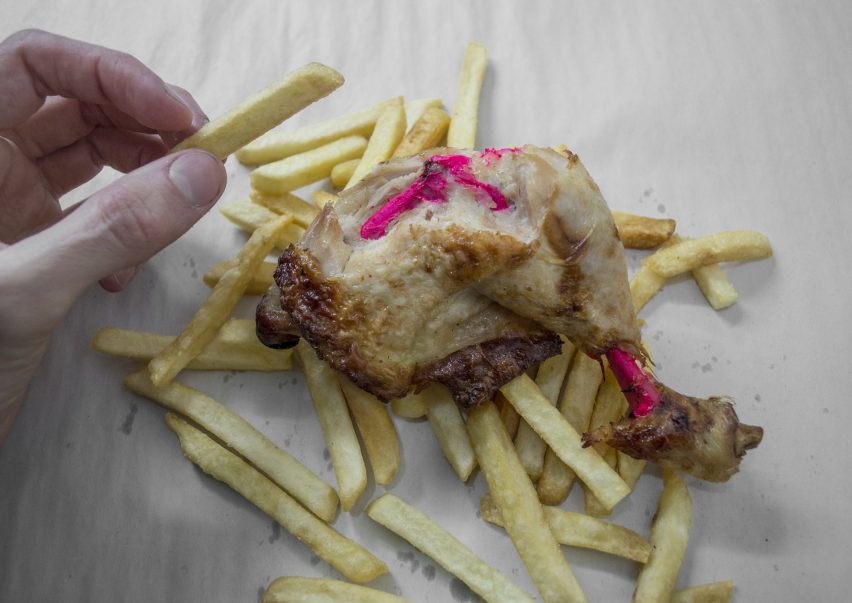
Vogelzang also spotlights the Pink Chicken Project by London-based Studio LeoLinnea. "It's a proposal to alter the DNA of all of the chickens we use for consumption to make the bones of the chickens pink," she says.
"The reason for doing this is because we consume so much chicken that eventually in the future, you will see a pink layer in the earth that is made of chicken bones, to mark the anthropocene, the time we live in now."
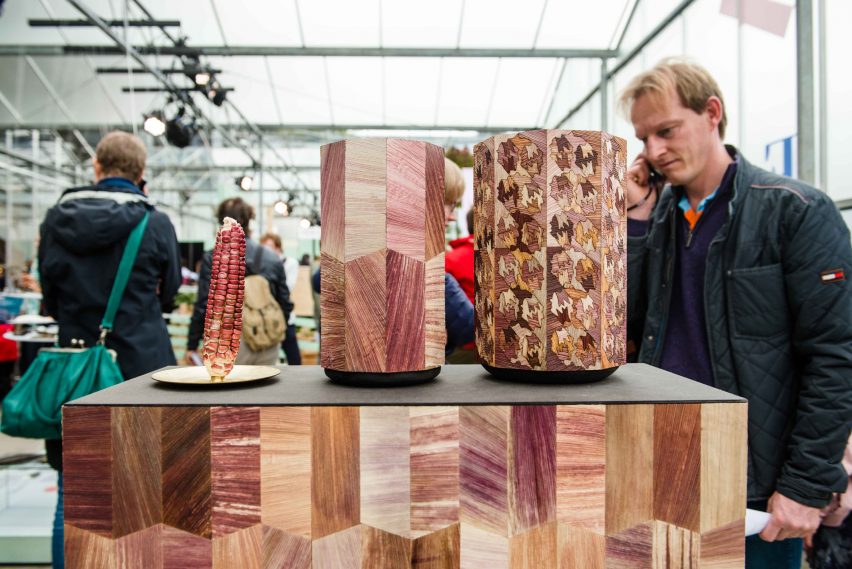
Also exhibiting at the Embassy of Food was Totomoxtle, a surfacing veneer that makes use of indigenous seeds of corn in Mexico, developed by Mexican designer Fernando Laposse.
"He's using all the different shades of corn husk to make a veneer that can eventually function as a new income stream for the farmers," claims Vogelzang.
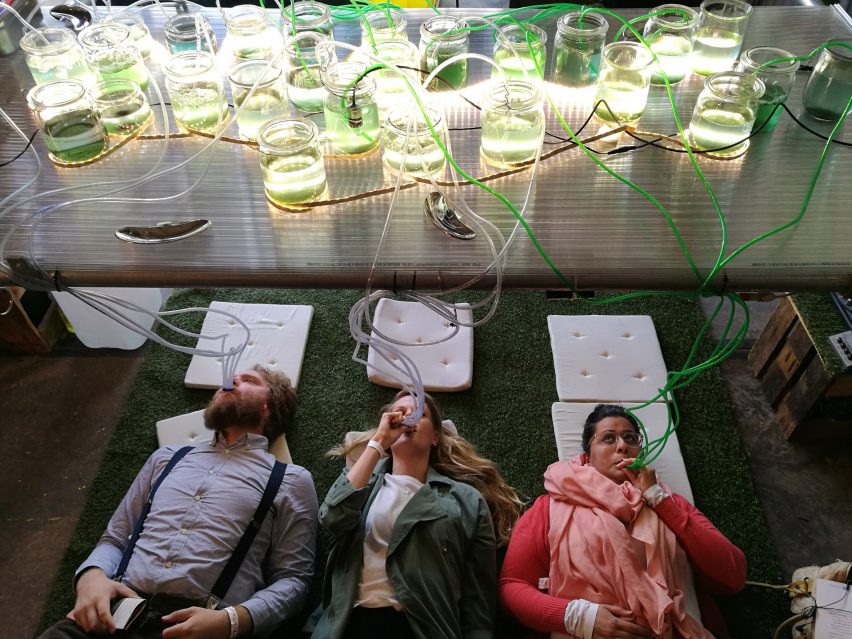
Beyond the projects exhibited as part of the audiotour, the exhibition also offered a number of interactive experiences in which visitors could sample and even help to produce foods. One such project was the Algae Bar, by Dutch food design collective Cateringa.
"The Algae Bar is an interactive installation where people are invited to lie down and breathe on the algae," says Vogelzang.
"By breathing on them, they actually feed them with their breath, and the algae can grow," she claims. "When you leave the bar you get a little algae shot, so you can eat the algae you grew."
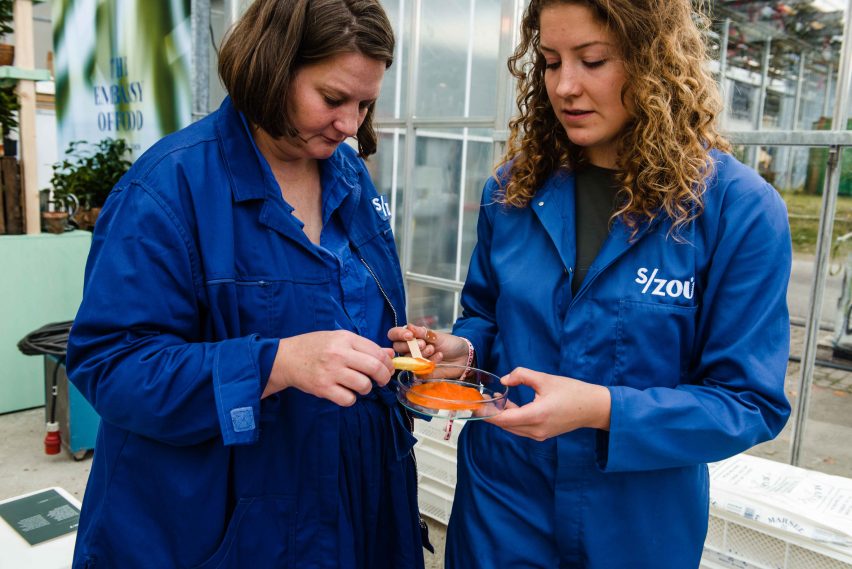
Vogelzang's overall ambition was to show visitors that producers and consumers are part of the same food system.
"When we want to have a positive and healthy food future we have to start to communicate, and we have to start to collaborate," she concludes.
During Dutch Design Week, Dezeen hosted a series of talks which discussed how design can help tackle major problems the world is facing.
We have published livestream movies of the talks, which addressed pollution, refugees, politics, terrorism and climate change. An edited version of the talk on climate change has been published, with more to follow soon.
